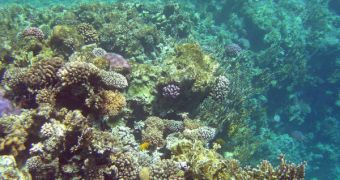Between April 4th and 28th, the Red Sea coast of Saudi Arabia will be center stage of the last expedition in an international collaboration program, which has unfurled over more than 4 years. The area that will host the last stage of the investigation is called Farasan Banks and is reported that the region contains a lot of coral reefs, which are the main target of the investigation effort.
The most important institutions involved in the efforts are the Khaled bin Sultan Living Oceans Foundation, the National Commission for Wildlife Conservation and Development, the National Coral Reef Institute, and the International Union for the Conservation of Nature (IUCN).
“Our ultimate goal is to influence positive actions by resource management authorities to preserve the coral reef resources of the world since ecosystem-based management can only be effectively achieved through the knowledge gained by scientific surveys and analyses. Additionally, the results of this comprehensive program are expected to give Saudi Arabia a distinct advantage in identifying the areas of highest biodiversity value so that the country can develop effective management plans to conserve these invaluable resources for future generations,” Living Oceans Foundation (LOF) chairman and founder HRH Prince General Khaled bin Sultan explains.
“This expedition to the Farasan Banks area is important because it is a geologically unique feature of the Red Sea that has not been surveyed since Cousteau was there almost six decades ago. Additionally, this is a productive fishing ground for Saudi Arabia, so it is important to survey the fish communities living in and around these coral reefs to determine if overfishing is occurring, since overfishing is a known source of harm to the health of coral reefs around the world,” LOF executive director Captain Phillip G. Renaud adds.
“The wildest of all the reef complexes in the Red Sea [is] 350 miles long and thirty miles wide. This demented masterpiece of outcrops, shoals, foaming reefs, and other lurking ship-breakers was created by societies of minute animals that have changed the aspect of our planet far more than man has yet been able to do,” Cousteau writes in his journal.
The lagoons that are created by the upwards-extending corals, located some 1,000 feet (330 meters) below the water, may hold lush formations of corals, and the science team, coordinated from the M/Y Golden Shadow research support vessel, plans to investigate them in minute detail.

 14 DAY TRIAL //
14 DAY TRIAL //